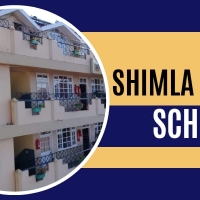Shimla Public School in Shimla, Himachal Pradesh Admission, Fees Structure

Where is Shimla Public School ?
Shimla Public School is Located in Shimla , Himachal Pradesh, India
Address of Shimla Public School, Shimla
Shimla,
Himachal Pradesh 171002
How do I contact Shimla Public School?
Call at +91 -94183 22564 to contact Shimla Public School
About Shimla Public School
SCHOOL HISTORY
This School was started by Mrs. Pritpal Singh in the year 1979. After having worked in Bishop Cotton School for 13 years and heading the Junior Section there. She left in 1977 and 1978 she got started with Shimla Public School and worked single handedly for so many years. It was because of her long hours of work and extreme dedication that she suffered from a stroke in 1993 which resulted in her Right Side getting completely paralysed and her speech went away completely. Again because of her determination and the will to be well again, she worked very hard with her therapists and, today, is the guiding factor for all of us at S.P.S.
Shimla Public School was a Nursery School in the first years. As the years passed by and the reputation of the School became known to all people, the pressure from the parents increased and a new class was added each year. In 1986 the School got its Affilation to the Council for the Indian School Certificate Examination, New Delhi. The first batch of I.C.S.E was in the year 1990.
S.P.S has a Hostel too, which was started with the persuasion of one parent who left tow of his kids as he was unable to stay in Shimla and did not want his children to leave the School. The Hostel grew over the years and today there are 115 students in Hostel. 60 of these Hostelers are from all parts of the Country and 55 are from abroad. In the Hostel we excel in personal care of kids. There are two wardens on the campus, and Mr. Mrs.Pritinder Singh, of the Management, live on the campus. There are 650 children in the School and 40 Teachers. For the Hostel students we have 6 prep Teachers who come every evening from 4:30 to 6:30 p.m.
Small hamlets were recorded prior to 1815 when British forces took control of the area The climatic conditions attracted the British to establish the city in the dense forests of the Himalayas As the summer capital, Shimla hosted many important political meetings including the Simla Accord of 1914 and the Simla Conference of 1945 After independence, the state of Himachal Pradesh came into being in 1948 as a result of the integration of 28 princely states Even after independence, the city remained an important political centre, hosting the Simla Agreement of 1972.
After the reorganisation of the state of Himachal Pradesh, the existing Mahasu district was named Shimla Shimla is home to a number of buildings that are styled in the Tudorbethan and neo-Gothic architectures dating from the colonial era, as well as multiple temples and churches The colonial architecture and churches, the temples, and the natural environment of the city attracts tourists Attractions include the Viceregal Lodge, the Christ Church, the Jakhoo Temple, the Mall Road, the Ridge and Annadale The city centre's northern most point is Jakhoo and the southern most location is Annadale, and the easternmost point is Sanjauli and western point is Chotta Shimla.
The Kalka–Shimla Railway line built by the British, a UNESCO World Heritage Site, is also a major tourist attraction Owing to its steep terrain, Shimla hosts the mountain biking race MTB Himalaya, which started in 2005 and is regarded as the biggest event of its kind in South Asia Shimla also has the largest natural ice skating rink in South Asia Apart from being a tourism centre, the city is also an educational hub with a number of colleges and research institutions
The predominantly mountainous region comprising the present-day Himachal Pradesh has been inhabited since pre-historic times having witnessed multiple waves of human migration from other areas Through its history, the region was mostly ruled by local kingdoms some of which accepted the suzerainty of larger empires Prior to India's independence from the British, Himachal comprised the hilly regions of Punjab Province of British India After independence, many of the hilly territories were organized as the Chief Commissioner's province of Himachal Pradesh which later became a union territory In 1966, hilly areas of neighboring Punjab state were merged into Himachal and it was ultimately granted full statehood in 1971.
Himachal Pradesh is spread across valleys with many perennial rivers flowing through them Almost 90% of the state's population lives in rural areas Agriculture, horticulture, hydropower and tourism are important constituents of the state's economy The hilly state is almost universally electrified with 995% of the households having electricity as of 2016.
The state was declared India's second open-defecation-free state in 2016 According to a survey of CMS – India Corruption Study 2017, Himachal Pradesh is India's least corrupt state